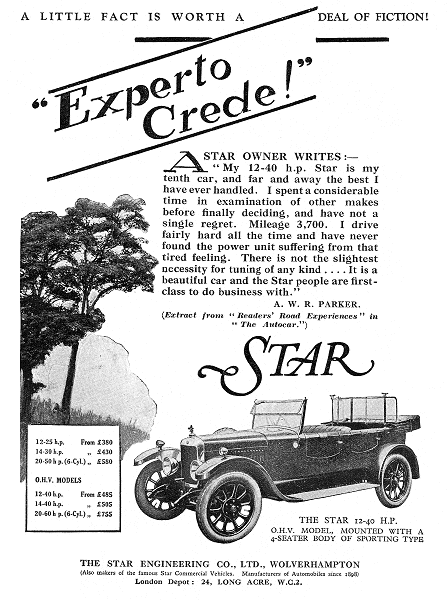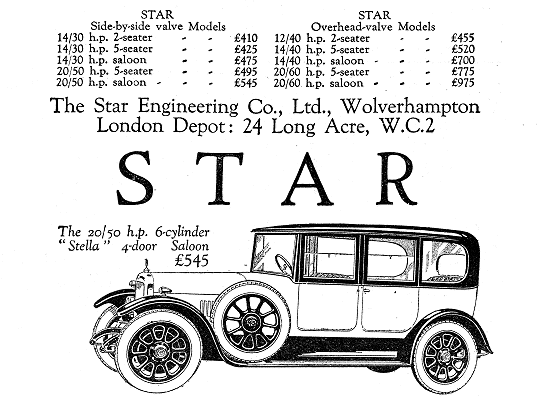|
In 1923 a side-valve,
six-cylinder 18/40 model was introduced, as was the
side-valve, six-cylinder 20/50. In 1926 these cars also
got overhead-valve engines, becoming the 18/50 and 20/60
respectively. Later a 24/70 overhead six was added to
the range.

An advert from 'The Motor', 31st
August, 1926.

A 1926 price list.
By the time of the General Strike
in 1926 Star cars had become extremely expensive when
compared with the competition. Star continued to produce
beautifully engineered and reliable cars, with a high
standard of finish, rather than going into mass
production. Unfortunately this would eventually lead to
the company’s decline. The recession resulted in
just 105 cars leaving the works in 1927. |